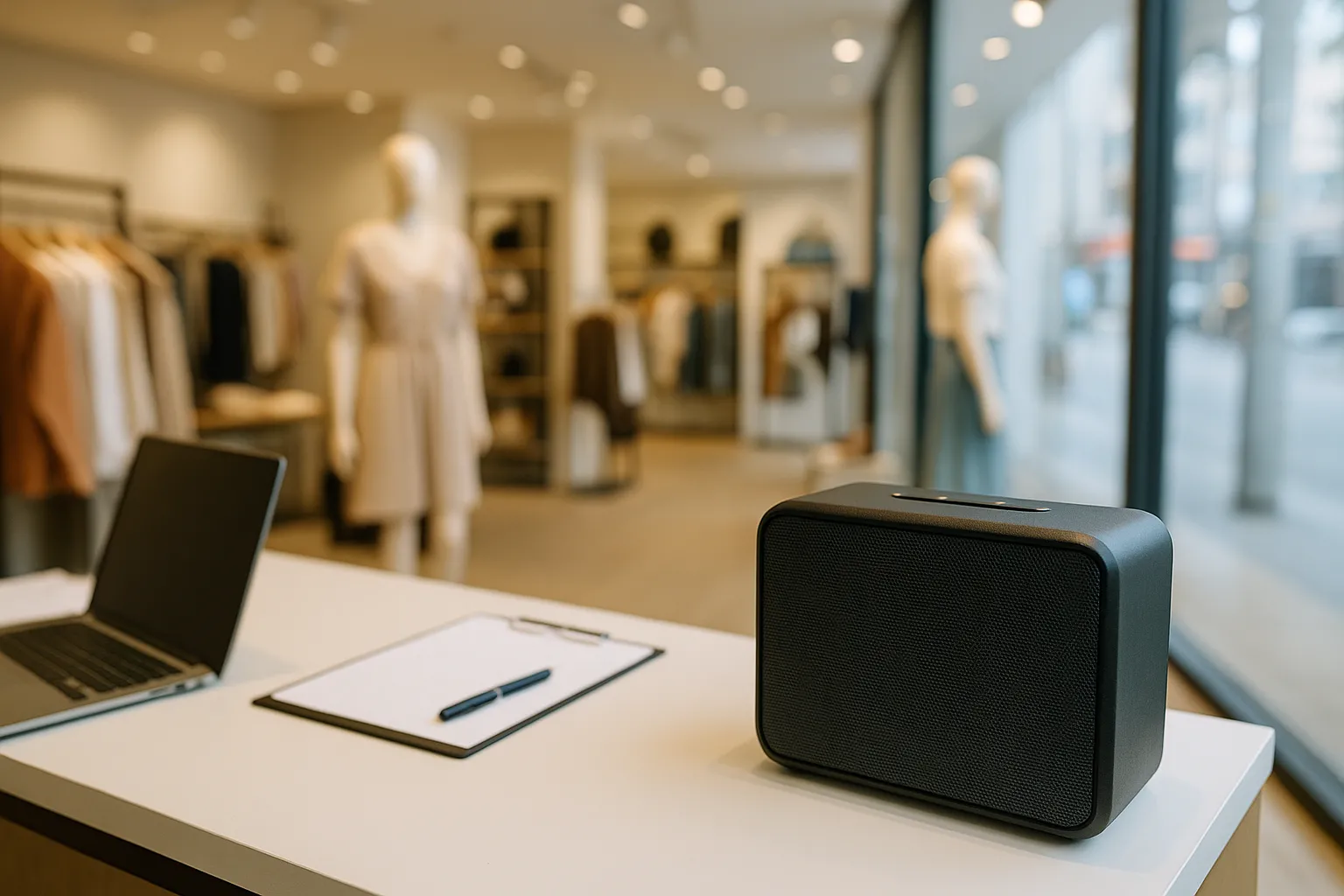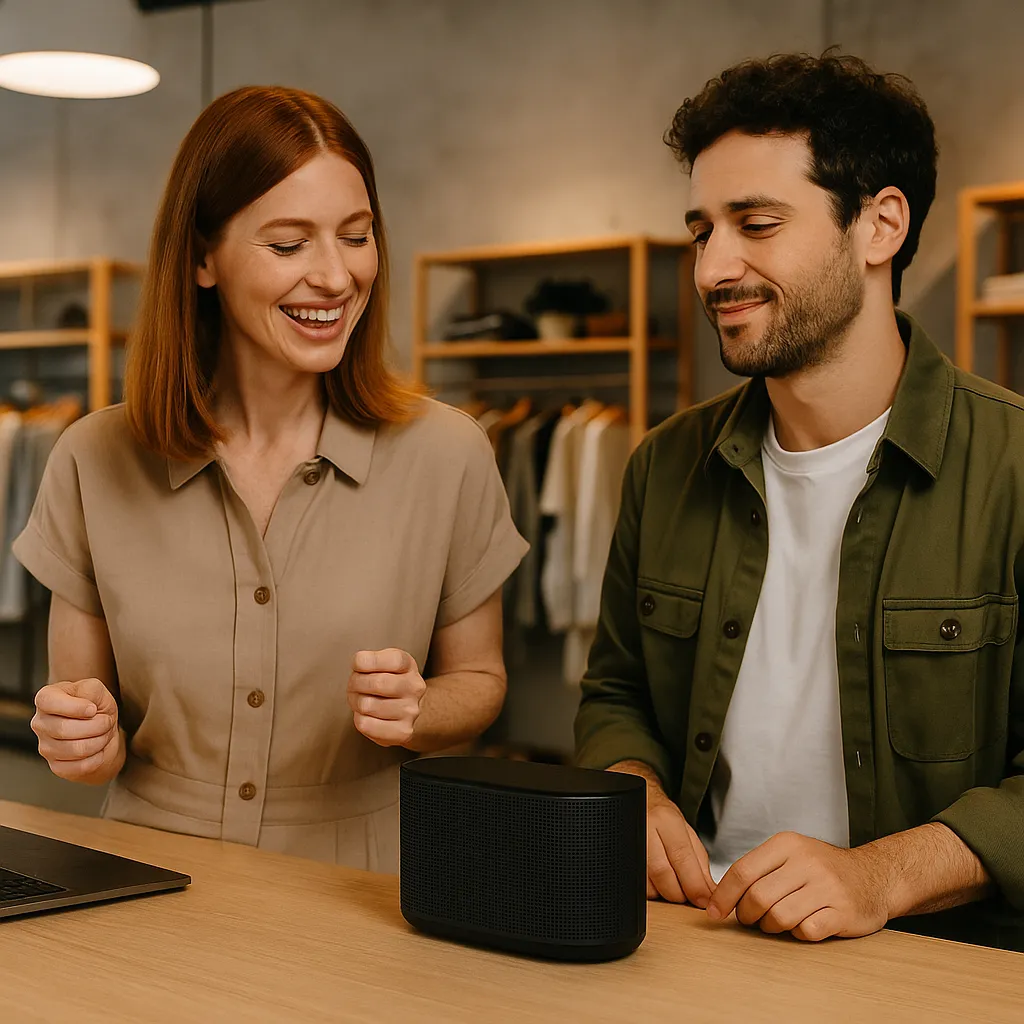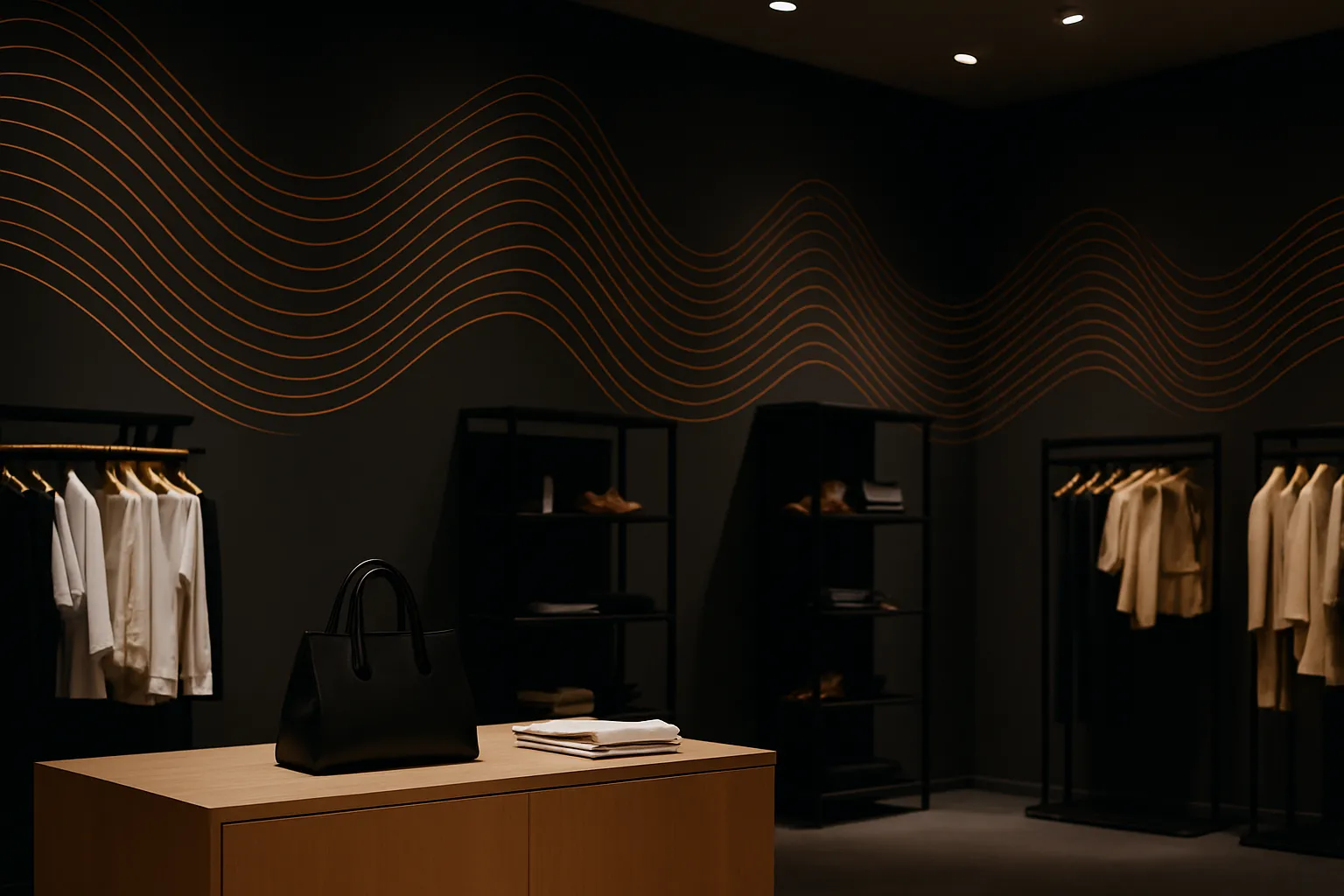The music industry is going through a profound crisis. Managers and insiders describe an environment saturated with influencers and inflated numbers, where songs are manufactured for the social face of the moment. It’s no longer about artists, but about “views”. Music has become a fast-food product: quick, disposable, forgettable.
This model, criticized by authoritative voices in the field, isn’t confined to festivals and pop charts. It’s also affecting retail, where many stores, showrooms, and venues keep paying expensive licenses to broadcast mainstream music. But does that really make sense?
Retail doesn’t need to chase the latest radio hit. It needs retail music — sound designed to move customers, build a sonic identity, and enhance the shopping experience. Today you can do this intelligently with AI-generated music or with fully licensed catalogs.
Not a fallback — a choice for quality and freedom.
The mainstream myth: an expensive illusion
Mainstream promises instant recognition: a famous track “sets the mood” because everyone knows it. But in a store, a restaurant, or a gym — does it really work that way?
- customers get distracted or even annoyed by hearing the same hits everywhere;
- licensing fees for famous tracks rise year after year;
- the brand loses uniqueness, becoming yet another sonic clone.
Quick definition: using mainstream music in retail means paying much more without creating real value.
Fast-food music and retail: same mistakes, same waste
Fast-food music is manufactured at the table, built to last one season and then vanish. Many brands make the same mistake when choosing the soundtrack for their spaces.
- it trivializes the experience, making it identical everywhere;
- it tires both staff and customers;
- it burns budgets on collecting bodies and licenses with little return.
Quick definition: fast-food music doesn’t build identity — it drains resources and bores customers.
The real alternative: quality music built for retail
Retail can choose a different path. Today it’s possible to have in-store music of the highest quality, without inflated costs and without being tied to mainstream logic.
AI and fully licensed: more freedom, lower costs
With AI we can generate original tracks, unique and tailored to the brand’s mood, constantly updated and free from ANY COPYRIGHT MANAGEMENT ORGANIZATION. In parallel, fully licensed catalogs offer music by real artists — often outside major-label circuits — perfect for curated, personalized atmospheres.
- personalized sonic identity instead of following short-lived trends;
- reduced, transparent costs with a single direct license;
- continuous updates — no static catalogs.
Quick definition: AI or fully licensed retail music gives you unique, legal playlists without double fees.
Sonic consistency as the new luxury
In modern retail, true luxury isn’t the latest chart hit in the background but a coherent sonic experience. A fashion concept store communicates exclusivity through a playlist built ad hoc, not a radio single. In a gym, what matters is an energetic, constantly refreshed soundtrack — not the same hit on repeat. Sound curation is quality, just like design and service.
Real-life scenarios: how retail music changes the game
Fashion
A fashion store that only plays mainstream playlists risks sounding like everyone else. Music becomes background noise, not an experience. With a tailored selection — adding AI-generated tracks that reflect the brand’s style — the atmosphere changes: the space feels more coherent and customers instantly perceive a distinctive identity.
Fitness
In gyms, commercial hits only work briefly: after a few weeks they already feel old. A soundtrack refreshed daily with original tracks keeps motivation high and the vibe fresh. Here AI isn’t a gimmick — it’s a concrete ally to power workouts.
Comparison box: mainstream vs fully licensed music
mainstream
- high licensing costs
- same playlists everywhere
- generic atmospheres
- no brand identity
AI or fully licensed music
- direct, transparent licensing
- personalized playlists
- unique, coherent atmospheres
- brand identity enhanced
Summary box: why choose AI or fully licensed
- No inflated costs: one direct, transparent license
- Custom playlists: built for brand, sector, and target
- Constant updates: fresh music, zero repetition
- Legal freedom: usage without ANY COPYRIGHT MANAGEMENT ORGANIZATION
- Unique experience: music becomes part of your brand identity
FAQs: frequently asked questions
what is retail music?
Quick definition: retail music is designed to support the shopping experience, not to climb the charts. It’s customized for spaces and brands.
why isn’t mainstream licensing worth it in retail?
Because you spend a lot without real value: hits don’t build loyalty and often annoy customers. Investing in sonic consistency pays off.
how does AI music work in a store?
AI music is generated based on the brand’s chosen mood and can be refreshed daily with new tracks. It’s not a static catalog — it’s a continuous creative flow.
what’s the difference between fully licensed and royalty-free music?
Fully licensed music is created by real artists and granted with a direct license, without intermediaries. Royalty-free is often more generic and less curated — very different models in terms of quality and rights.
can I combine AI and fully licensed catalogs?
Yes — and it’s often the best choice: combining innovation with authentic artistry for consistency and variety.
do I really save money without collecting societies?
Yes. With direct licensing you avoid double payments and manage everything with a single end-to-end contract — clear and verifiable.
does AI music really update every day?
Yes. AI lets you generate a constant flow of fresh tracks aligned with your brand’s style — avoiding the “same music again” effect.
conclusion
Mainstream music is saturated with influencers and inflated numbers. Replicating that model in retail makes little sense — especially if it means paying high fees for tracks that add no value. The smart choice is to adopt retail music, AI or fully licensed, designed for sonic identity, legal freedom, and brand consistency.




